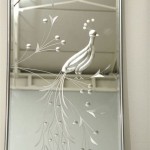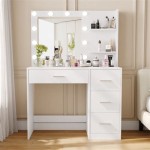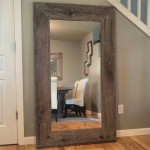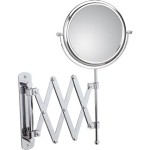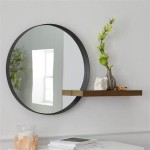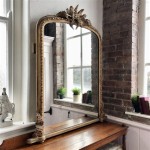How To Make A Mirror Out Of Plain Glass
Creating a mirror from plain glass involves applying a reflective coating to one side. This process, known as silvering, transforms the transparent glass into a reflective surface. While commercially produced mirrors utilize sophisticated equipment and controlled environments, it's possible to create a functional mirror using readily available materials and techniques suitable for a home or small workshop setting.
Before beginning the silvering process, the glass surface must be thoroughly cleaned and prepared. Any dust, grease, or fingerprints will interfere with the even application of the reflective coating and can lead to imperfections in the finished mirror. Cleaning can be achieved using a combination of dish soap and water, followed by a thorough rinse with distilled water. The final cleaning stage should involve wiping the glass with a lint-free cloth and a cleaning solution such as isopropyl alcohol to ensure the removal of any remaining residues.
Several methods exist for silvering glass, each employing different chemical solutions. One commonly used method involves a solution of silver nitrate and a reducing agent. Silver nitrate supplies the silver ions necessary for the reflective coating, while the reducing agent facilitates the conversion of these ions into metallic silver, which adheres to the glass surface.
Preparing the silver nitrate solution requires careful measurement and handling. Specific instructions regarding the required concentration should be followed precisely, as variations can impact the quality of the final mirror. Silver nitrate should be dissolved in distilled water, using glassware specifically designated for this purpose. It's important to note that silver nitrate can stain skin and clothing, so appropriate protective measures, such as gloves and safety glasses, should be worn throughout the process.
Once the silver nitrate solution is prepared, a reducing solution needs to be made. Several chemicals can serve as reducing agents, including glucose, dextrose, or formaldehyde. Similar to the silver nitrate solution, the reducing agent should be dissolved in distilled water according to specific instructions for the chosen chemical. The concentration and temperature of both solutions are crucial factors in achieving a uniform and reflective silver layer.
With both solutions prepared, the silvering process can begin. The cleaned glass should be placed on a level surface in a clean, dust-free environment. The silver nitrate solution is poured onto the glass surface, ensuring complete coverage. The reducing solution is then gently added to the silver nitrate solution already on the glass. The mixing of these two solutions initiates the chemical reaction that deposits metallic silver onto the glass.
The reaction requires time to complete, typically ranging from a few minutes to an hour, depending on the specific chemicals and environmental conditions. During this time, the silver coating will gradually become visible, transforming the glass surface into a reflective surface. It is important to avoid disturbing the glass during this process to ensure a smooth and even coating.
After the reaction is complete, the excess solution should be carefully drained from the glass. The newly silvered surface will be delicate and susceptible to damage, so handling should be minimized. Rinsing with distilled water helps remove any residual chemicals and further stabilizes the silver layer. Allowing the mirror to air dry in a dust-free environment is recommended.
To protect the delicate silver layer and enhance the mirror's durability, a protective backing is necessary. This can be achieved by applying a layer of paint, varnish, or a specialized mirror backing paint. The backing provides a barrier against oxidation and physical damage, prolonging the mirror's lifespan. Careful application of the protective layer, ensuring complete coverage and even distribution, is crucial for a professional-looking finish.
Alternative methods for creating mirrors at home include using specialized mirror coating sprays or films. These commercially available products offer a simplified approach, eliminating the need to handle potentially hazardous chemicals. However, these methods may not achieve the same level of reflectivity or durability as the traditional silvering process.
Regardless of the chosen method, creating a mirror from plain glass requires careful preparation, precise execution, and attention to detail. Understanding the chemical processes involved and adhering to safety precautions are essential for a successful outcome. While the process can be challenging, the satisfaction of creating a functional mirror from raw materials is a rewarding experience.

How To Make A Mirror With Pictures Wikihow

Easy Ways To Make A One Sided Mirror With Pictures Wikihow

Diy Antique Mirror Makeover Jenna Sue Design
Library Arts Mirror Tile Tea Light Holder

How To Quickly Turn Glass Mirror In 4 Steps Spray Paint Home Decor Ideas

How To Quickly Turn Glass Mirror In 4 Steps Spray Paint Home Decor Ideas

Decorating I Decided To Make My Own Glass Tiled Bathroom Mirror When Couldn T Find One Liked For Less Than 100 Cut Home Diy Redo

4mm 5mm 6mm Wall Decor Round Rectangle Clear Beveled Frameless Furniture Mirror Basin Bath Bathroom Glass Make Up China Made In Com

Crl Bm4e4 Clear Mirror Glass 4 Emerald Corner Beveled On All 6 Sides Com

Make Your Home To Look Larger With Mirror Glass

